QuestionQUESTION: I have a 7 month old standard poodle, Toby. I acquired him about 2 months ago from a breeder who shows poodles. He lived with 5 other adult standards and a few adult toy poodles as well as some younger puppies. He is a pretty good dog in the house. I feel like he listens and obeys my commands and is respectful of us and the house. I also am a mom and have a 2 and 4 year old at home. He is mostly gentle and well behaved with them. We have problems when he is around other dogs. He goes completely uncontrolled excited!! I am really committed to walking him everyday and for the most part he does very well. He will stay by my side, but if there is another dog he stares intently regardless of how hard I try to redirect his focus. Then he will jump in circles and try to lunge to get there faster. I really don't feel like he is aggressive at all, just incredibly excited. I recently started a group obedience class. The first time was a complete nightmare. He was whining, straining at the leash, and barking the whole time to try to get over to the one other dog in the class that night. This has just started in the last month I think. At first he acted more unsure/timid/scared when we saw another dog on our walk. His tail would go between his legs, but he would still be curious and want to meet and would approach. Also, our neighbors have a dog that he has played with a few times and they play really rough/excited so I don't know if this contributed to his rambunctious attitude.
I am really at a loss of how to calm him when this happens. Most of the time I am pushing a double stroller with my two kids on the walk and controlling a bounding standard at the same time is really draining. How can I go about taming his excitement?
ANSWER: Your dog is most likely demonstrating an over eagerness to meet and greet the other dogs. You can't rehabilitate this behavior with the stroller and children. It requires a head collar (Halti, Gentle Leader, etc.) and some positive reinforcement training. If the group obedience class you are in USES COERCIVE METHODS, STOP NOW. All this experience will do is teach your dog that his natural excitement causes him pain and confusion. I'm appalled that the trainer in this class didn't offer (really simple) instructions on how to handle this problem, and that makes me think that this trainer DOES NOT KNOW and should not be teaching group class. OBSERVE this class without the dog; if any choker collars, yelling, leash correction, or anything other than positive reinforcement is used, FIND another trainer. Anyone can call themselves a dog trainer.
Go to your pet supply store and have the dog fitted for a head collar (as spoken of above.) Then train him to wear it. When you put it on him for the first few times, pop a bit of treat into his mouth at the same time you slip the collar over his head. He must anticipate reward when he receives the head collar. Purchase a leash for the head collar: never lead a dog by the head collar, but use the leash to turn him and use his neck collar (ONLY a martingale, see this link:
http://www.things4yourdog.com/product/407064
to control him. Once your dog accepts wearing the head collar (indoors), do the following:
Keep your left hand lightly at the middle of the head collar leash while holding both in your right hand. DO NOT LEAD THE DOG BY THE HEAD COLLAR, this is frightening to a dog and can harm him physiologically. Go into your yard and do some exercises with the dog: walk in wide circle, then abruptly walk in a circle in the other direction. Each time you plan to change direction, say, "Come along" and use the head collar GENTLY to turn the dog's head in the new direction, then pop a treat into his mouth the moment he turns. Keep walking in circles for a few minutes with the "come along" phrase and the reward when the dog follows the head collar in the new direction. Then pretend there is a large, long ladder in front of you on the ground (or, if you have one, put it down.) Walk in a zig zag pattern as if you are passing through the rungs of the ladder, weaving in and out; at the "end" of the "ladder", turn back with your "come along", GENTLY using the head collar, and treat, then zig zag back. Then begin walking straight lines, occasionally doing an about face with "come along" and treat. As dogs perform complex behaviors, their cognition increases (there is a change in brain wave patterns); the dog will not be afraid, he will be attentive and LEARNING. When you are finished with this approximately 15 to 30 minute exercise, go in the house, praise the dog, take off the head collar.
Repeat this exercise several days in a row until the dog clearly understands the "come along" and follows willingly in any direction you choose. Then take the dog, head collar and all, out onto the street. Do not FLOOD him with multiple dogs (avoid places where multiple dogs are seen). As soon as he begins to demonstrate his over anxious behavior, use your "come along" signal and the head collar to go in the opposite direction for a brief time (seconds), then turn back toward the approaching dog. Do this until your dog has calmed (or until the approaching dog has passed); repeat this exercise over and over again over the course of how many days it takes for your dog to begin to calm almost immediately on your "come along" signal and be able to greet and interact with another dog without hilarity.
If you can find a group obedience class with a truly experienced and knowledgeable trainer, you can ask for a few moments before each class where you can greet a well trained dog (not a beginner), only after having done the above exercises outdoors. Conjoining this behavior modification with a learned behavior (positive reinforcement trained "sit") will help your dog (especially in the presence of another dog that is not going to offer hilarious response in return) to feel more confident, less anxious, more under your control and help him to behave in a less rambunctious manner when "strange" dogs approach him on the street.
---------- FOLLOW-UP ----------
QUESTION: Thanks so much for your answer. I will definitely be following your instructions. I also wondered about play time. At this point should I allow him to play with other dogs? At the dog park? With the rambunctious, excited neighbor's dog? I'm not sure if it will help, hurt, or have no effect on his excited behavior.
AnswerI think positive off leash experiences with other dogs in a dog park is a good thing; it should help him to build strong positive associations, even if one of those dogs is rambunctious. If you see any behavior you don't like, step between them (it's called splitting) and try to redirect your dog to a toy (carry one in your pocket) for a few seconds.

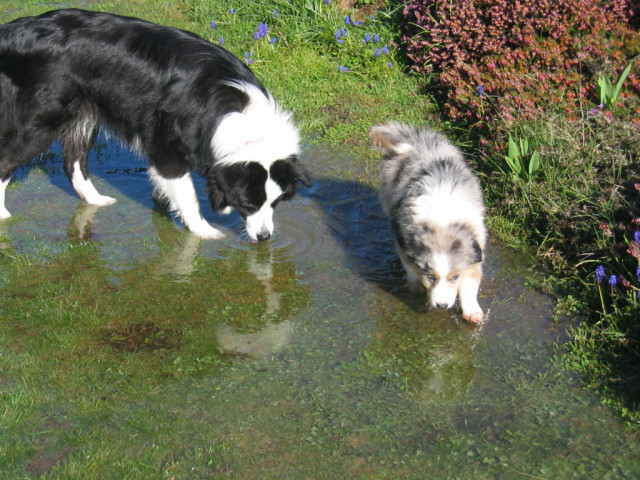 Dog in Heat?
QuestionLily and Jorge
QUESTION: Hello,
We have
Dog in Heat?
QuestionLily and Jorge
QUESTION: Hello,
We have
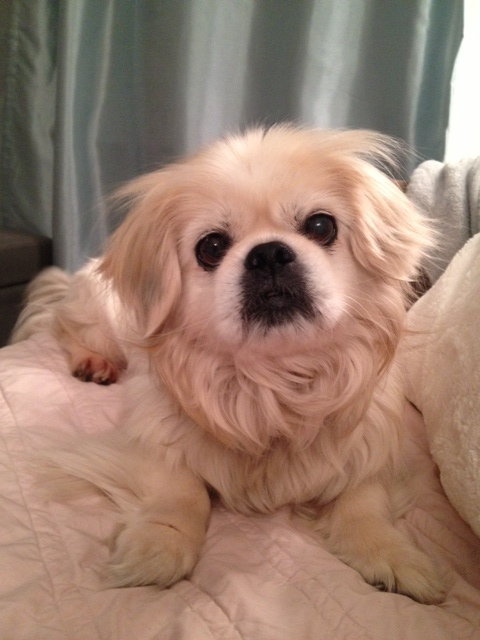 Nightmares?
Question
Beethoven
Hi Melissa, Ive had my very h
Nightmares?
Question
Beethoven
Hi Melissa, Ive had my very h
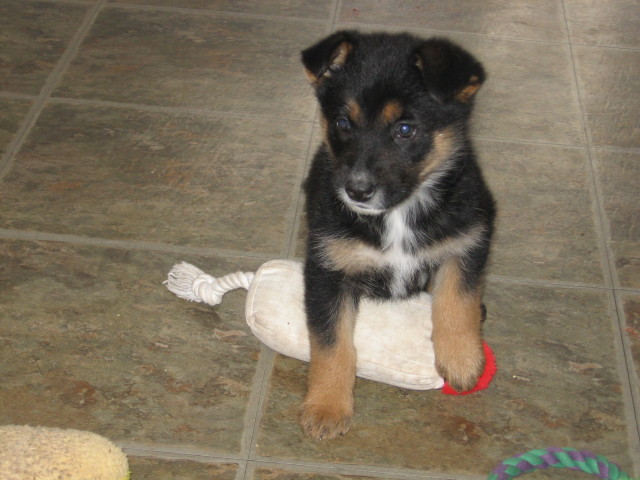 puppy problems
QuestionQUESTION: I am the proud owner of 2 german shep
puppy problems
QuestionQUESTION: I am the proud owner of 2 german shep
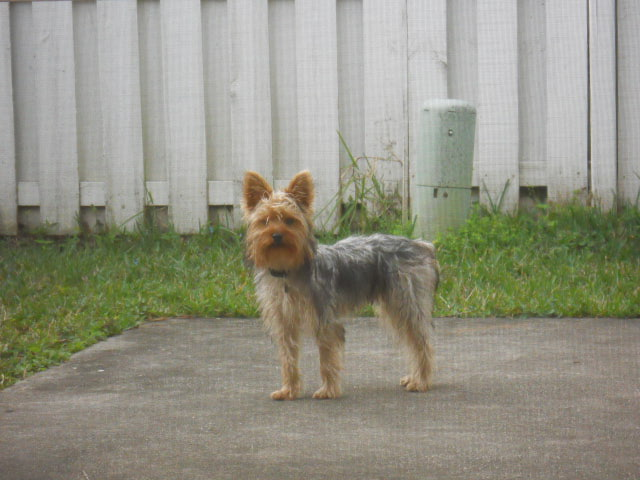 agressive silky terrier
Question
Lucas 1 year old
Hi Jennifer:
I have a
agressive silky terrier
Question
Lucas 1 year old
Hi Jennifer:
I have a
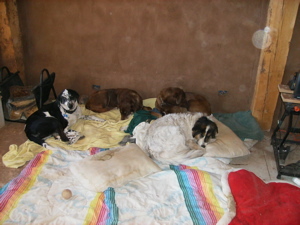 Sudden aggression within pack after a death
Question
Sudden aggression in o
We have an approximatel
Sudden aggression within pack after a death
Question
Sudden aggression in o
We have an approximatel